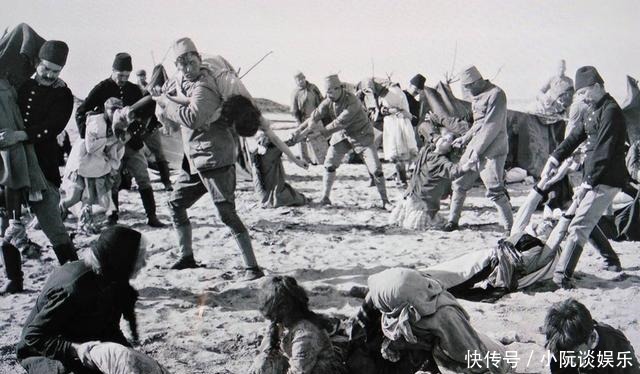
ж–Үз« жҸ’еӣҫ
д»ҺдёҠйқўзҡ„д»Јз ҒеҸҜд»ҘзңӢеҲ° пјҢ еҰӮжһңеҫ—еҲҶдёә 0 пјҢ иҜҙжҳҺеҸҚдәІе’ҢжҖ§е·Із»ҸеҫҲеҘҪ пјҢ ж— йңҖдјҳеҢ– гҖӮзӣҙжҺҘи·іеҲ° cleanup еҺ»йҮҠж”ҫ offenders иҠӮзӮ№зҡ„еҶ…еӯҳз©әй—ҙ гҖӮ
еҰӮжһңеҫ—еҲҶдёҚдёә 0 пјҢ еҲҷе°ұдјҡи®ҫзҪ®дёҖдёӘжңҖеӨ§иҝӯд»Јж¬Ўж•°maxiter пјҢ иҝҷдёӘж¬Ўж•°и·ҹиҠӮзӮ№зҡ„ж•°йҮҸжҲҗжӯЈжҜ” пјҢ 然еҗҺ while еҫӘзҺҜеңЁжңүйҷҗж¬Ўиҝӯд»ЈеҶ…иҝӣиЎҢдјҳеҢ–ж“ҚдҪң гҖӮ

ж–Үз« жҸ’еӣҫ
иҝҷдёӘеҮҪж•°зҡ„ж ёеҝғе°ұеңЁ while еҫӘзҺҜйҮҢ пјҢ жҲ‘们жқҘзңӢдёҖдёӢе…¶дёӯзҡ„дёҖдәӣзүҮж®өпјҡ
йҰ–е…Ҳ offending_len жқҘеӯҳеӮЁиҝқеҸҚ规еҲҷзҡ„иҠӮзӮ№ж•° пјҢ 然еҗҺеҰӮжһңд№ӢеүҚжңүиҝқеҸҚ规еҲҷзҡ„иҠӮзӮ№(offenders != NULL)еҲҷйҮҠж”ҫжҺүпјҲzfree(offenders)пјүпјӣ
然еҗҺйҮҚж–°и®Ўз®—еҫ—еҲҶ пјҢ еҰӮжһңеҫ—еҲҶдёә0жҲ–жІЎжңүиҝқеҸҚ规еҲҷзҡ„иҠӮзӮ№ пјҢ йҖҖеҮә while еҫӘзҺҜпјӣ

ж–Үз« жҸ’еӣҫ
жҺҘзқҖеҺ»йҡҸжңәйҖүжӢ©дёҖдёӘиҝқеҸҚ规еҲҷзҡ„иҠӮзӮ№ пјҢ е°қиҜ•дәӨжҚўеҲҶй…Қзҡ„ masterпјҡ

ж–Үз« жҸ’еӣҫ
然еҗҺйҒҚеҺҶйӣҶзҫӨдёӯзҡ„иҠӮзӮ№ пјҢ еҜ»жүҫиғҪеӨҹдәӨжҚў master зҡ„ slave гҖӮеҰӮжһңжІЎжңүжүҫеҲ° пјҢ йӮЈе°ұйҖҖеҮәеҫӘзҺҜпјҡ

ж–Үз« жҸ’еӣҫ
еҰӮжһңжүҫеҲ°дәҶ пјҢ е°ұејҖе§ӢдәӨжҚўе№¶и®Ўз®—дәӨжҚўеҗҺзҡ„еҸҚдәІе’ҢжҖ§еҫ—еҲҶпјҡ

ж–Үз« жҸ’еӣҫ
еҰӮжһңдәӨжҚўеҗҺзҡ„еҫ—еҲҶжҜ”д№ӢеүҚзҡ„еҫ—еҲҶиҝҳеӨ§ пјҢ иҜҙжҳҺзҷҪдәӨжҚўдәҶ пјҢ иҝҳдёҚеҰӮдёҚдәӨжҚў пјҢ е°ұдјҡеӣһйЎҫпјӣеҰӮжһңдәӨжҚўеҗҺзҡ„еҫ—еҲҶжҜ”д№ӢеүҚзҡ„еҫ—еҲҶе°Ҹ пјҢ иҜҙжҳҺдәӨжҚўжҳҜжІЎжҜӣз—…зҡ„пјҡ

ж–Үз« жҸ’еӣҫ
жңҖеҗҺйҮҠж”ҫиө„жәҗ пјҢ еҮҶеӨҮдёӢдёҖж¬Ў while еҫӘзҺҜпјҡ

ж–Үз« жҸ’еӣҫ
жҖ»з»“дёҖдёӢпјҡ
жҜҸж¬Ў while еҫӘзҺҜдјҡе°қиҜ•йҡҸжңәйҖүжӢ©дёҖдёӘиҝқеҸҚеҸҚдәІе’ҢжҖ§и§„еҲҷзҡ„д»ҺиҠӮзӮ№ пјҢ 并дёҺеҸҰдёҖдёӘйҡҸжңәйҖүдёӯзҡ„д»ҺиҠӮзӮ№дәӨжҚўе…¶дё»иҠӮзӮ№еҲҶй…Қ пјҢ 然еҗҺйҮҚж–°и®Ўз®—дәӨжҚўеҗҺзҡ„еҸҚдәІе’ҢжҖ§еҫ—еҲҶ еҰӮжһңдәӨжҚўеҗҺзҡ„еҫ—еҲҶеҸҳеӨ§ пјҢ иҜҙжҳҺдәӨжҚўдёҚеҲ©дәҺеҸҚдәІе’ҢжҖ§ пјҢ дјҡеӣһж»ҡдәӨжҚў еҰӮжһңдәӨжҚўеҗҺеҫ—еҲҶеҸҳе°Ҹ пјҢ еҲҷдҝқжҢҒ пјҢ еҗҺйқўеҸҜиғҪиҝҳйңҖиҰҒеӨҡж¬ЎдәӨжҚў иҝҷж · пјҢ йҖҡиҝҮеӨҡж¬ЎйҡҸжңәзҡ„дәӨжҚўе°қиҜ• пјҢ жңҖз»ҲеҸҜд»ҘиҫҫеҲ°жӣҙеҘҪзҡ„еҸҚдәІе’ҢжҖ§еҲҶеёғжңҖеҗҺеҲҷжҳҜдёҖдәӣ收е°ҫе·ҘдҪң пјҢ еғҸиҫ“еҮәж—Ҙеҝ—дҝЎжҒҜ пјҢ йҮҠж”ҫеҶ…еӯҳзӯү пјҢ иҝҷйҮҢдёҚиҝҮеӨҡд»Ӣз»Қпјҡ

ж–Үз« жҸ’еӣҫ
дёӢйқўжҳҜе®Ңж•ҙд»Јз Ғпјҡ
static void clusterManagerOptimizeAntiAffinity(clusterManagerNodeArray *ipnodes, int ip_count) { clusterManagerNode **offenders = NULL; int score = clusterManagerGetAntiAffinityScore(ipnodes, ip_count, NULL, NULL); if (score == 0) goto cleanup; clusterManagerLogInfo(">>> Trying to optimize slaves allocation " "for anti-affinityn"); int node_len = cluster_manager.nodes->len; int maxiter = 500 * node_len; // Effort is proportional to cluster size... srand(time(NULL)); while (maxiter > 0) { int offending_len = 0; if (offenders != NULL) { zfree(offenders); offenders = NULL; } score = clusterManagerGetAntiAffinityScore(ipnodes, ip_count, &offenders, &offending_len); if (score == 0 || offending_len == 0) break; // Optimal anti affinity reached /* We'll try to randomly swap a slave's assigned master causing * an affinity problem with another random slave, to see if we * can improve the affinity. */ int rand_idx = rand() % offending_len; clusterManagerNode *first = offenders[rand_idx], *second = NULL; clusterManagerNode **other_replicas = zcalloc((node_len - 1) * sizeof(*other_replicas)); int other_replicas_count = 0; listIter li; listNode *ln; listRewind(cluster_manager.nodes, &li); while ((ln = listNext(&li)) != NULL) { clusterManagerNode *n = ln->value; if (n != first && n->replicate != NULL) other_replicas[other_replicas_count++] = n; } if (other_replicas_count == 0) { zfree(other_replicas); break; } rand_idx = rand() % other_replicas_count; second = other_replicas[rand_idx]; char *first_master = first->replicate, *second_master = second->replicate; first->replicate = second_master, first->dirty = 1; second->replicate = first_master, second->dirty = 1; int new_score = clusterManagerGetAntiAffinityScore(ipnodes, ip_count, NULL, NULL); /* If the change actually makes thing worse, revert. Otherwise * leave as it is because the best solution may need a few * combined swaps. */ if (new_score > score) { first->replicate = first_master; second->replicate = second_master; } zfree(other_replicas); maxiter--; } score = clusterManagerGetAntiAffinityScore(ipnodes, ip_count, NULL, NULL); char *msg; int perfect = (score == 0); int log_level = (perfect ? CLUSTER_MANAGER_LOG_LVL_SUCCESS : CLUSTER_MANAGER_LOG_LVL_WARN); if (perfect) msg = "[OK] Perfect anti-affinity obtAIned!"; else if (score >= 10000) msg = ("[WARNING] Some slaves are in the same host as their master"); else msg=("[WARNING] Some slaves of the same master are in the same host"); clusterManagerLog(log_level, "%sn", msg); cleanup: zfree(offenders); }
жҺЁиҚҗйҳ…иҜ»
- дёҖеҸ°жңҚеҠЎеҷЁдёҠйғЁзҪІ Redis дјӘйӣҶзҫӨ
- дёәд»Җд№ҲжҲ‘们йңҖиҰҒж¶ҲжҒҜйҳҹеҲ—пјҹ
- MongoDB NoSQLд№ӢзҫҺпјҡдёәд»Җд№ҲйҖүжӢ©йқһе…ізі»еһӢж•°жҚ®еә“пјҹ
- иҝҮе№ҙдёҚеҸҜд»Ҙжү“зўҺдёңиҘҝеҗ— жҳҘиҠӮдёәд»Җд№ҲдёҚиғҪжү“зўҺдёңиҘҝ
- дёәд»Җд№Ҳи¶ҠжқҘи¶ҠеӨҡзҡ„е№ҙиҪ»дәәйҖүжӢ©вҖңиәәе№івҖқиҖҢдёҚеҶҚжҺЁеҙҮеҠӘеҠӣе·ҘдҪң
- дёәд»Җд№ҲеӨ§еӨҡ数收и—Ҹзҡ„ж–°жүӢе®№жҳ“иё©еқ‘
- жөҷжұҹеӨ§еӯҰз”ҹиЎҖжҙ—дәәзӨҫеұҖ, иҮҙ1жӯ»1дјӨ, жҖ’е–Ҡпјҡдёәд»Җд№ҲйғҪиҰҒж¬әиҙҹжҲ‘
- дёәд»Җд№Ҳжү“зңјеҗғиҚҜзҡ„жҖ»жҳҜжҲ‘пјҹ
- еҜ’зӘ—иӢҰиҜ»еҚҒдҪҷе№ҙпјҢдёәд»Җд№ҲеҫҲеӨҡеӨ§еӯҰз”ҹжҜ•дёҡеҗҺпјҢ他们йғҪеҺ»еҒҡдәҶй”Җе”®пјҹ
- 31еІҒеҺ»зӣёдәІпјҢиў«и®ӨжҲҗвҖңеӯ©еӯҗеҰҲвҖқпјҹдёәд»Җд№Ҳз”Ёеҝғжү“жү®пјҢеҸҚиҖҢжӣҙжҳҫиҖҒдәҶ


















